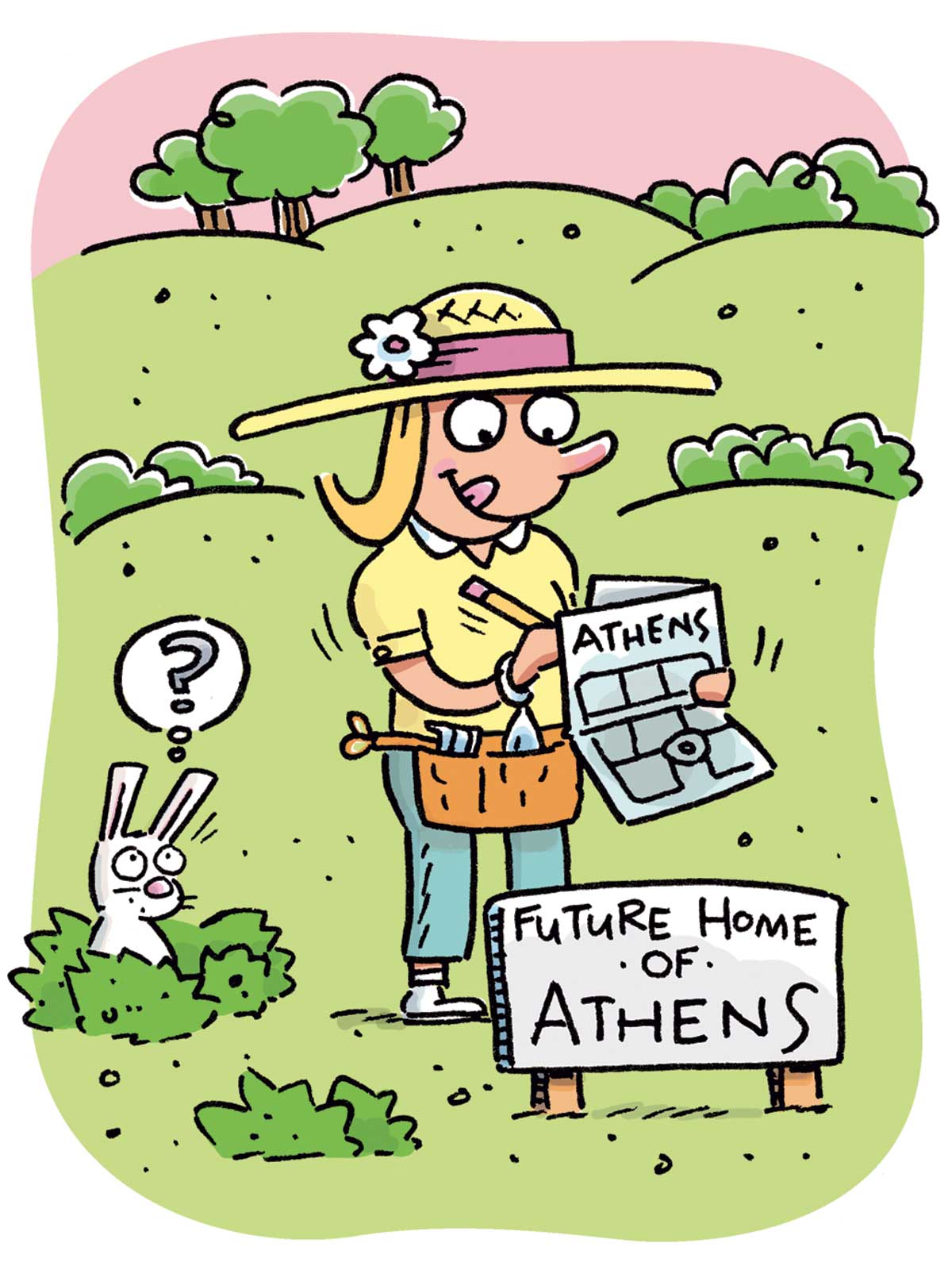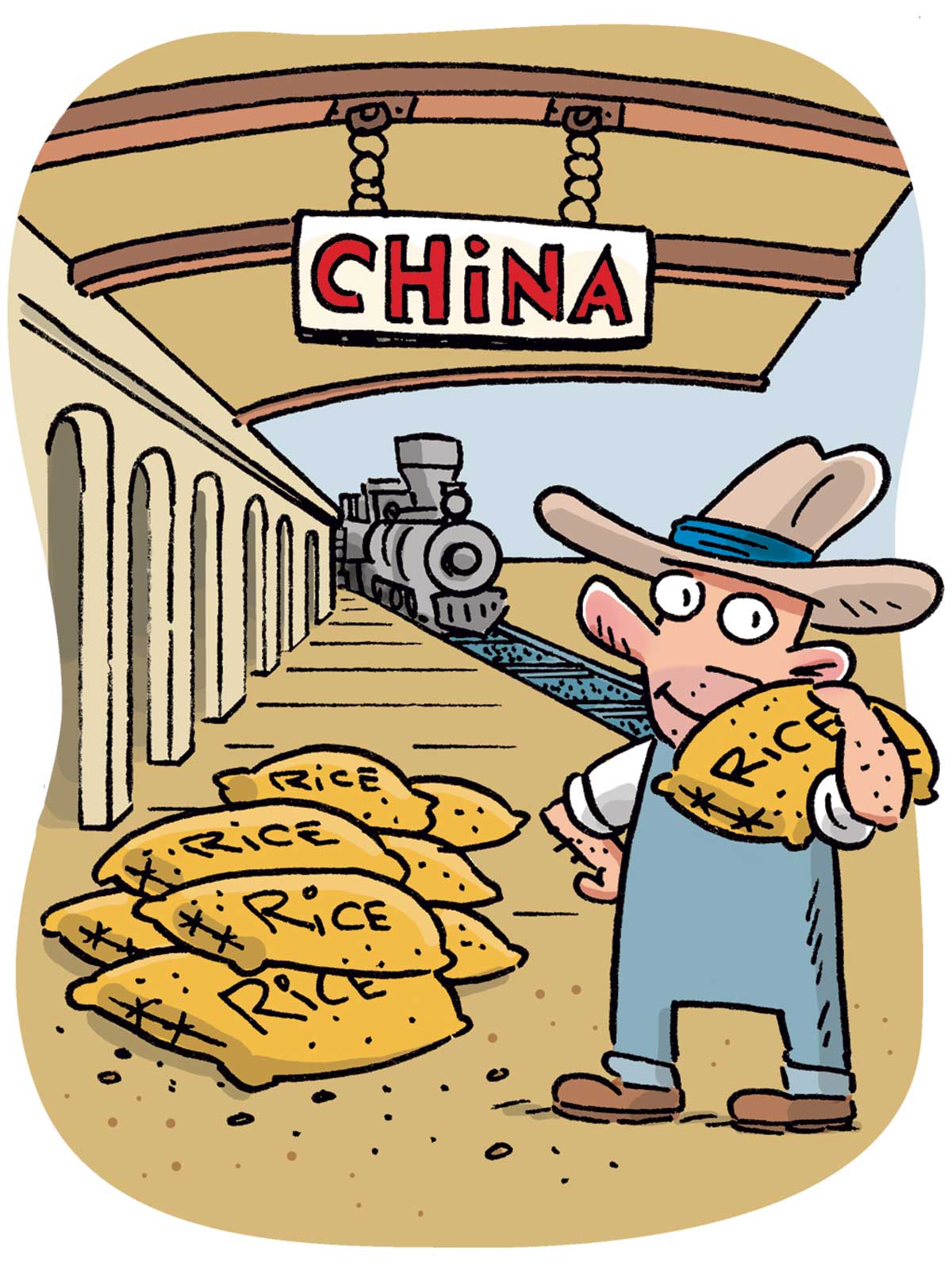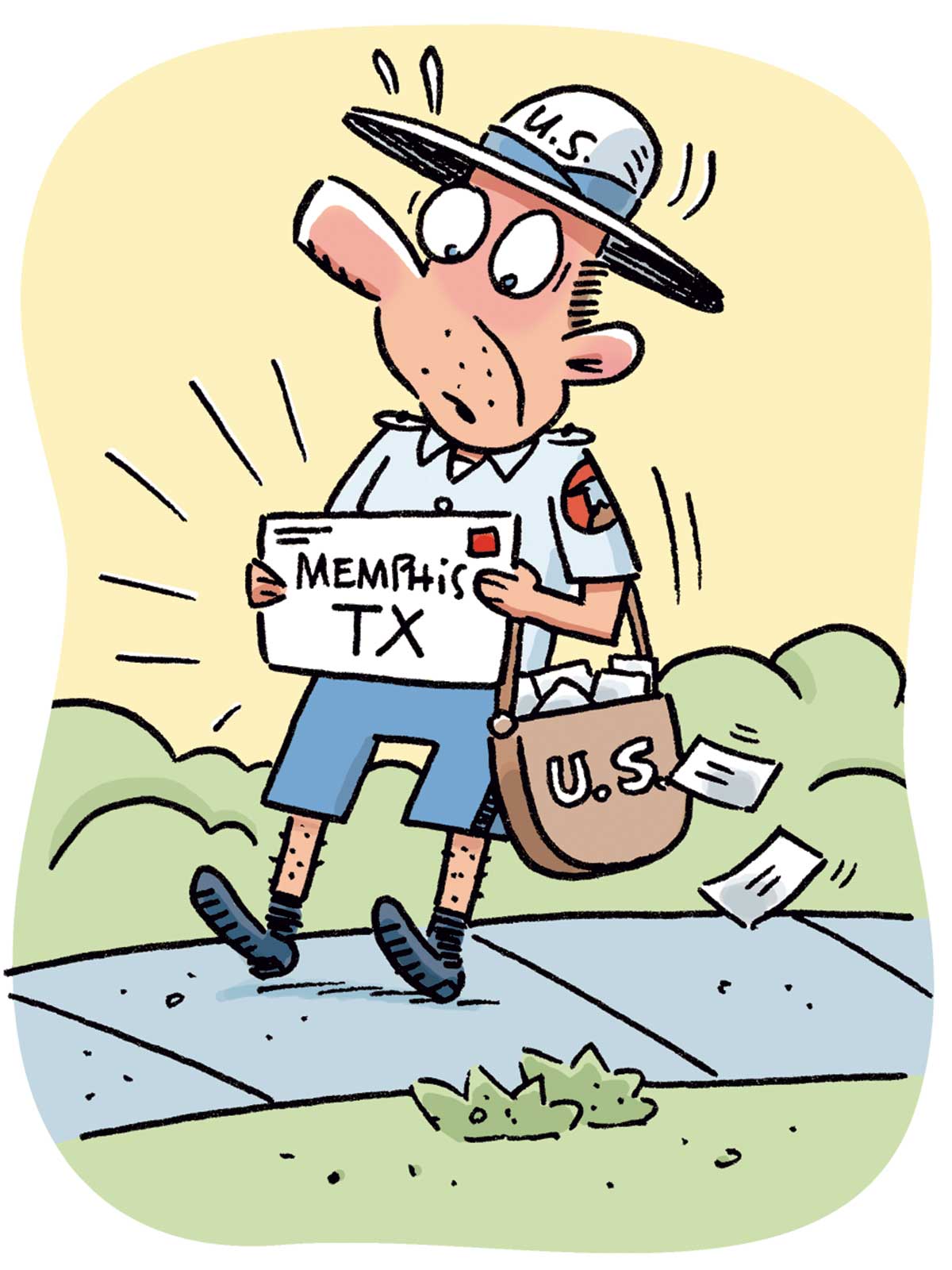“Well I drove my truck to Italy/And on to Naples fair,” sings Bill Neely, the old-time country singer from McKinney and Austin who was popular mostly regionally from the 1950s through the ’80s. Over the next several verses, he names another three dozen locales, many foreign (Palestine, Trinidad, Scotland, Paris) and even more American (New York, Detroit, Miami, Cleveland). Then, in the final two lines of his tune, Neely reveals, “I visited all those places named/Never left the Lone Star State.”
The boasting song is titled “Never Left the Lone Star State”—also known as “Texas Map Song”—and each of the places mentioned is in Texas.
So how did Texas wind up with so many municipalities seemingly named after others, even foreign ones? (Neely’s delightful song fails to mention Odessa, Nazareth, Oslo and more.)
The first thing you must understand is that when a new settlement emerges, it’s the post office that gets named, not the settlement itself. A name is submitted to postal authorities, and they approve or not, depending mainly on whether it’s already been taken. It can be frustrating getting everyone to agree on a name and then get it approved.
(In 1880, a community in Travis County had six names rejected before folks rebelled and fumed, “Let the post office be nameless and be damned.” The Nameless Post Office lasted until 1890.)
The choice of what to call a place might be inspired by someone’s last name, by topographic features of the region, by a Native American word, by the local industry, by whimsy or by the name of another town. But the explanation is not always what it might first appear to be. Consider these four Texas towns with “foreign” names.

Athens
Originally named Alfred, after postmaster Alfred F. Mallard in the 1840s, this East Texas town became Athens in 1850 after residents decided “Alfred is a silly name for a town,” says Phyllis Vermillion of the Henderson County Historical Commission. Athens was suggested by 16-year-old farmer’s daughter Dulcinea Ann Holland, whose family had moved there in 1847 from Athens, Georgia, according to her state historical marker, though many other sources say the Hollands came from Athens, Alabama.
Dulcinea never attended school, but she pushed for the new name both in honor of her hometown and because she wanted her new town to become an educational incubator like the Greek city. (She’s also responsible for naming College Street.)
Dulcinea’s father died in 1848; in 1851 she married postmaster and county clerk E.J. Thompson. Her widowed mother married Judge John “Red” Brown. The judge helped Dulcinea indulge her penchant for civic affairs behind the scenes (the only way a woman could do so in that era).
The Thompsons were founding members of the local Methodist church. E.J. Thompson died in 1861, and several years later “Aunt Dul,” as Athenians dubbed her, was remarried, to James Avriett.
She is credited with influencing the town’s street layouts, as well as with planting oak and cedar trees. Years after Athens was named, townspeople realized it was built on seven hills, just like the Greek city, but it never became Dulcinea’s hoped-for center of learning.
Back to Greece: Athens, Texas—population 12,710—is the Black-Eyed Pea Capital of the World. Turns out black-eyed peas are a regular part of the Greek diet. Check out this recipe for black-eyed peas with greens and fennel (mavromatika me maratho) by Greek chef Diane Kochilas.

China
In the 1860s, a small settlement was growing around a water stop in a grove of chinaberry trees on the Texas and New Orleans Railroad line about 10 miles west of Beaumont. The settlement became known as China Grove, and a post office bearing that name eventually was built in 1887; it lasted only a couple months.
In 1893, a post office with the shortened name of China was established while the train depot itself remained China Grove. Then in 1906, the depot burned to the ground. When it was rebuilt two miles east in the larger town of Nashland, the railroad insisted on keeping the name of China because that was better known. So the Nashland post office quickly changed its name to China, though it wasn’t until 1971 that the community voted to incorporate as China.
(The shorter name was doubtless a good idea because there have been four communities named China Grove in Texas, including the real-life “sleepy little town down around San Antone” memorialized by the Doobie Brothers’ 1973 song of the same name.)
Meanwhile, those chinaberry trees that started the whole naming process were becoming virtually extinct—until the 1990s, when the town and some residents began planting and nurturing new ones.
There’s one other thing about the name that visitors to the town sometimes can’t help remarking on, says Patricia Nantz, administrative assistant to Jefferson County commissioner Eddie Arnold: China—population 1,160—is located in the heart of rice-growing country.
Back to China: Despite all that rice, you won’t find a Chinese restaurant in town. “No, you can’t come to China for Chinese food,” Nantz says.
Edinburg
This South Texas city, with a population of 77,100, got its name through the kind of chain of events that, for many, gives Texas its Wild West reputation. The first seat of Hidalgo County was originally named Edinburgh in honor of the supposed birthplace of prominent local merchant John Young (who was actually born in the Hebrides but perhaps lived in the Scottish capital before coming to America).
“And then here’s where it gets really interesting,” laughs Lisa Adam, curator of collections at the Museum of South Texas History. In 1885, Edinburgh changed its name to Hidalgo (which it retains today). But in 1908, the town of Chapin—17 miles north and named after Dennis B. Chapin, one of its developers and a county judge—became the county seat after a legal vote on the matter. The county’s files were transferred to Chapin late at night. But as these things go sometimes, that matter has become legendary and now gets described rather colorfully, Adam explains. Most sources say Chapinites pilfered the files during a daring midnight raid on county offices in Hidalgo.
Then, in 1911, Chapin shot former Texas Ranger Oscar J. Rountree dead in a San Antonio saloon, claiming he had proof a former business rival had hired Rountree to “get” him. But the law-abiding citizens of Chapin knew a potential scandal when they smelled one and wasted no time switching their town’s name back to that of the original county seat—except they dropped the “h” at the end to comply with a ruling from the U.S. Board of Geographic Names that “burg” become the standardized spelling.
And, by the way, apparently all’s well that ends well: Chapin was acquitted of all charges.
Back to Edinburgh: There are lots of great Scots in Texas history, starting with Sam Houston. Others of Scottish or Scotch-Irish ancestry include Stephen F. Austin, David Crockett, Jim Bowie, Jim Hogg and J. Frank Dobie.

Memphis
It’s common knowledge that Memphis, Tennessee, on the Mississippi River, was named after the capital city of ancient Egypt on the Nile River. But this riverless Texas town, which began taking shape in Hall County in the southeast corner of the Panhandle in 1889, is a whole ’nother story—even if that story is probably apocryphal.
The town began developing along the Fort Worth and Denver City Railway when J.C. Montgomery bought the land from W.H. Robertson. Those two, plus the Rev. J.W. Brice and T.J. Woods Jr. of Dallas, formed a company that platted the town in 1890.
For its name, a succession of surnames of prominent citizens was given to postal authorities, but each was rejected. One tale has it that a local history student then proposed Memphis. But the more popular explanation is that Brice was at the General Land Office in Austin on official business later that year when he just happened to spot an envelope accidentally addressed to Memphis, Texas, rather than Tennessee. “No such town in Texas” was written across its front, and there you go: Memphis was submitted and accepted, and the post office opened in September 1890.
“A lot of our mail still goes to Tennessee,” sighs Jacqulyn Owens, director of the Memphis Public Library in this town of 2,290. “And I still receive shipments of books addressed to Memphis, Tennessee. They are very large shipments.”
Back to Memphis: Memphis, Tennessee, is as proud of its barbecue as any place in Texas. Whose is better? Well, at the Pit Stop Bar BQ on Boykin Drive in the Panhandle town, they could say both. But a Texan could probably feel at home in some of the barbecue joints in Memphis, Tennessee. Local expert Sally Walker Davies of 10best.com, writes of one of them, Payne’s: “This is a cash-only spot, and your meal is best eaten in the sunshine, using the hood of your car as your dining table.” (It’s better with a pickup truck, but you get the point.) And she notes that the Bar-B-Q Shop includes Texas toast on its menu.


